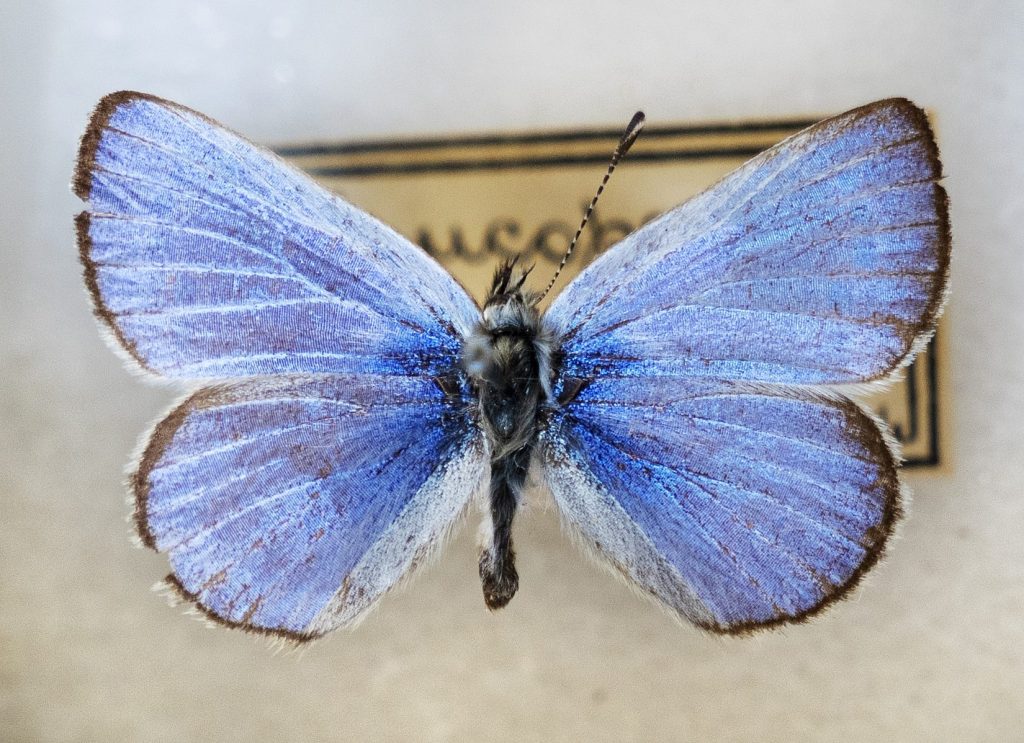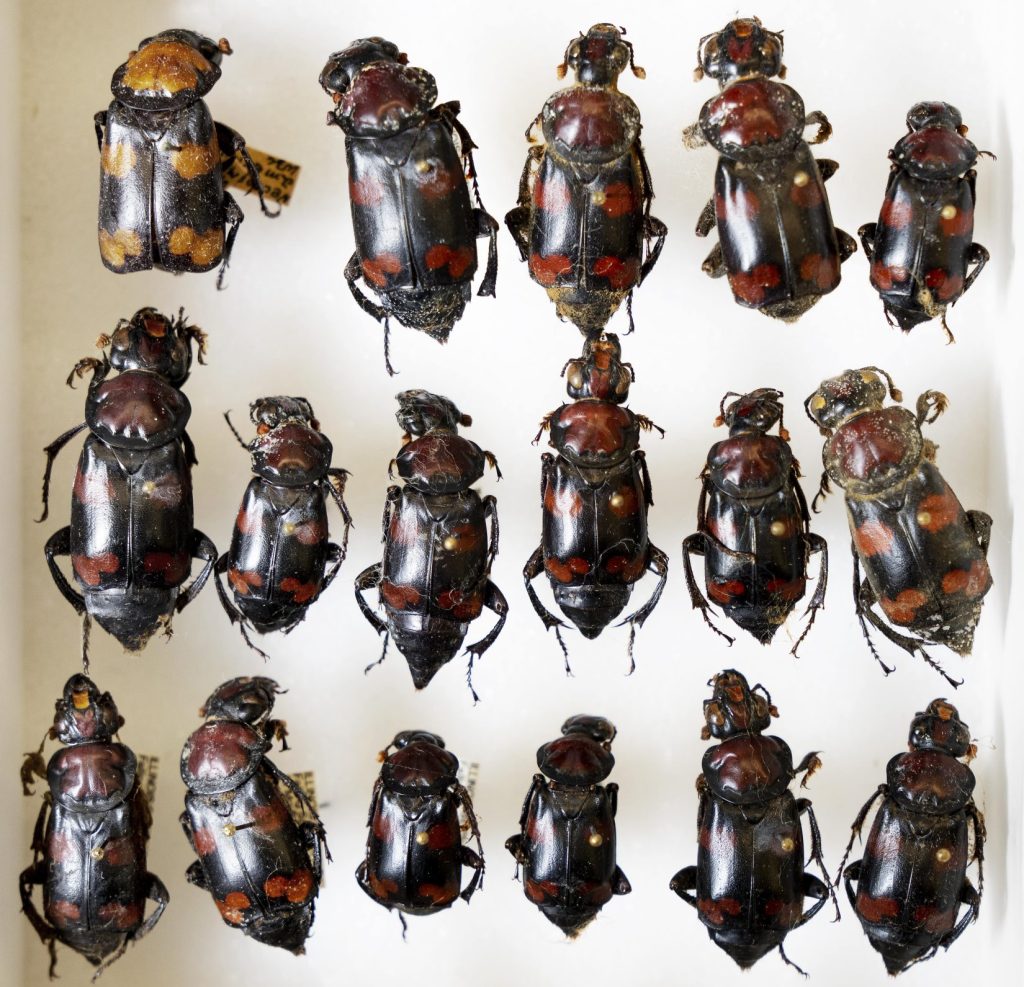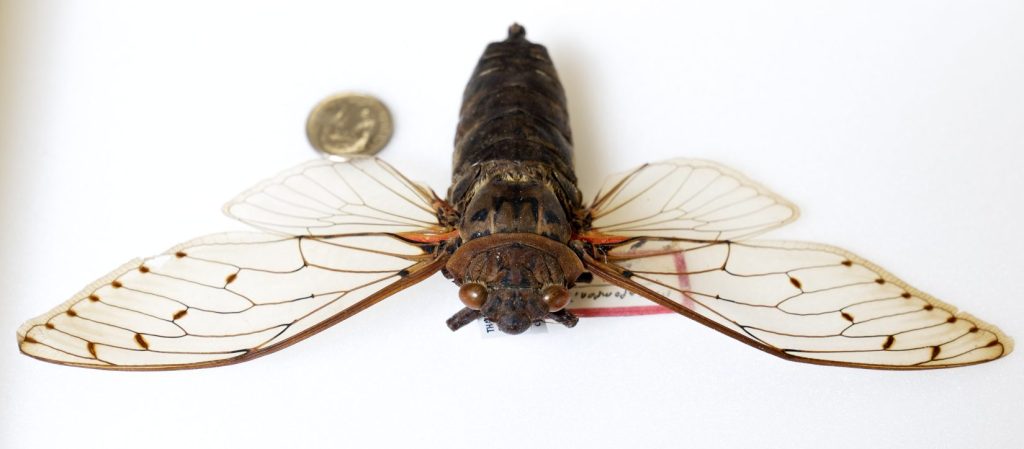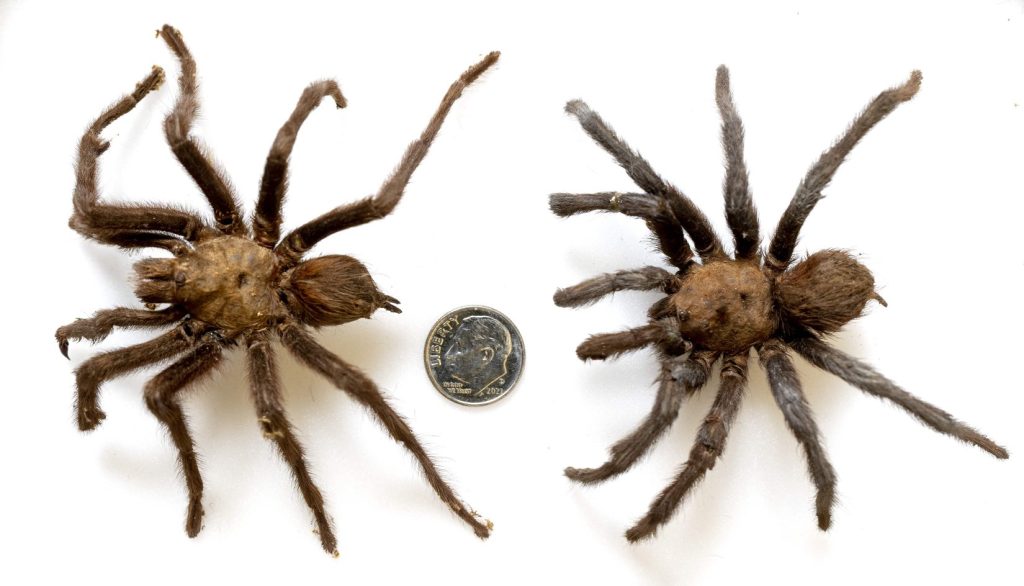Photos by L.G. Patterson
While most people usually take whatever preventative measures possible to keep insects away, Kristin Simpson spends much of her time surrounded by them. As manager of the Enns Entomology Museum at the University of Missouri, bugs are simply a part of her life.
“I was not one of the nerdy kids that grew up making an insect collection, but I was always interested in biology,” Simpson says as she notes that her love of science drew her to the field.
The museum itself was an early addition to MU, having been founded in July 1874. It now houses 6 million specimens of insects, arachnids and fossils, as well as aquatic insects of Ozark streams, making it the largest collection of insects in Missouri and one of the largest university collections. While it serves multiple programs in Missouri, the museum holds national and international importance as a primary source of insect and arachnid specimens representative of the Ozark Plateau, which includes portions of Missouri, Arkansas, Oklahoma and Kansas.
The museum allows Simpson the opportunity to continue her quest for knowledge while putting her love of organization to good use. “I’m always learning something,” she says. “It’s like a big puzzle. It’s a good thing. I like puzzles.”
Simpson started her journey at the museum in 1980 and has technically retired, but still works part time due to her love for the work. And, lucky for Simpson and others interested in the field, discovery is always on the horizon. “If anybody ever tells you they can identify every insect, they’re full of it,” she says. “We know of probably around a million different species of insects now that exist. We think there might be up to 30 or 40 million out there.”
In fact, according to the Smithsonian Institution, that roughly 1 million identified insects may represent about 80% of the world’s species. But most authorities agree that there are anywhere from 2 million to 30 million species that have yet to be identified. It’s work that continues at places like the Smithsonian and the Enns Entomology Museum, where faculty, researchers and students work on projects including identification and confirmation of species.
While the museum is typically open to the public from 8:30 a.m-5 p.m. Monday through Friday, it was closed to the public most of the summer due to staff schedules. Currently, the public display area is being moved to the Ag Labs hallway in the Agriculture Building at 700 Hitt St. Simpson says she has completed approximately a third of the move and expects to be finished by the end of the year.
Glaucopsyche xerces (Xerces blue butterfly)
Extinct
These beautiful Xerces blue butterflies are far from the creepy bug variety. Unfortunately, they also are extinct and have been for quite some time. They were last seen in the early 1940s in the San Francisco Bay area. It is one of the first American butterflies to become extinct from habitat loss caused by urban development. Some good did come of the butterfly’s extinction, as it inspired the foundation of the Xerxes society, which is focused on invertebrate conservation.
Nicrophorus americanus (American burying beetle)
Endangered
The small but mighty American burying beetle is a unique black and orange beetle that is known to crawl across North America. It is a critically endangered species that can reach 1 inch to 1.8 inches in length. The American burying beetle can be found in portions of Arkansas, Kansas, Oklahoma, Nebraska, South Dakota, Texas, off the coast of Rhode Island, off the coast of Massachusetts and even in the southwest corner of the Show-Me State.
Megapomponia sitesi Sanborn & Lee holotype (Cicada)
This big and beautiful cicada, which has a body longer than 70 millimeters and a wingspan more than 200 millimeters, was captured by Dr. Robert Sites, a professor at the University of Missouri, in southern Thailand. It is the largest species of cicada in the world! Since this species had not been described before, the name was up for grabs. Sites was honored to have the species named after himself following the capture of the magnificent insect. Now, the people of Missouri get to admire this beautiful being knowing its name came from a local academic.
Aphonopelma hentzi (Texas brown tarantula)
You might recognize this spider from any number of horrifying movie scenes. A terrifying creepy crawler that is meant to give you the heebiejeebies, but it’s really not as scary as it looks since the Texas brown tarantula is harmless. It is also known as Oklahoma brown tarantula or Missouri tarantula and is one of the most common species of tarantula living in the southern United States today. It is a non-aggressive species, but if it happens to sneak a bite, it generally does not cause serious harm to humans (except in the case of an allergic reaction).
For more information on the Enns Entomology Museum, visit museum.insecta.missouri.edu.






